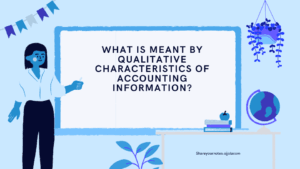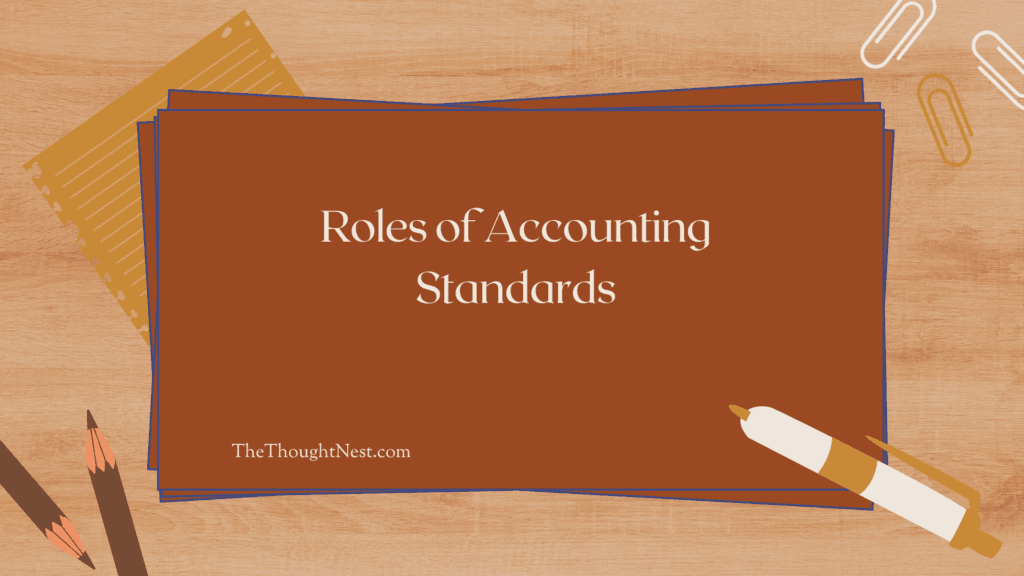What Are the Qualitative Characteristics of Accounting Information? A Guide for Decision-Makers
In the world of business and finance, numbers tell a story. An income statement, a balance sheet, a cash flow statement—these are not just collections of data; they are chapters in the financial narrative of a company. But what ensures that this story is worth reading? What makes it reliable, clear, and useful for making critical decisions? The answer lies in the **qualitative characteristics of accounting information**.
The simple answer is: The qualitative characteristics of accounting information are the specific attributes that make financial data genuinely useful to decision-makers, such as investors, lenders, and managers. These characteristics, defined by the Financial Accounting Standards Board (FASB) in the U.S., act as the quality control standards for financial reporting. They are divided into two main tiers: Fundamental Characteristics (Relevance and Faithful Representation) and Enhancing Characteristics (Comparability, Verifiability, Timeliness, and Understandability).
As a Certified Public Accountant (CPA) who has spent over fifteen years auditing financial statements and advising clients, I’ve seen firsthand what happens when these characteristics are present—and when they’re not. Information that possesses these qualities empowers sound investment choices, fair lending decisions, and smart business strategy. Information that lacks them can lead to confusion, mistrust, and catastrophic financial errors. This isn’t just abstract theory; it’s the bedrock of a functioning capital market. Let’s unpack these crucial concepts together.
The Foundation: Why Do We Need a Conceptual Framework?
Before diving into the individual characteristics, it’s important to understand where they come from. These rules aren’t arbitrary. They are a core component of the accounting profession’s rulebook. In fact, if you’re wondering “What is conceptual framework in accounting, and why do we need it?”, this is the perfect example. The framework is the constitution for financial reporting; it provides a logical, coherent structure that helps standard-setters create consistent rules and allows accountants to exercise professional judgment in complex situations. The qualitative characteristics are the part of that framework that defines what “good” information looks like.
The Hierarchy of “Useful” Information
Goal: Decision-Usefulness
↓
Fundamental Characteristics (Must-Haves)
Relevance & Faithful Representation
↓
Enhancing Characteristics (Nice-to-Haves that make info even better)
Comparability, Verifiability, Timeliness, Understandability
↓
Underlying Constraint: Cost
Tier 1: The Fundamental Qualitative Characteristics
For accounting information to be useful at all, it **must** possess the two fundamental characteristics: relevance and faithful representation. Think of these as the non-negotiable, load-bearing walls of a house. Without them, the entire structure collapses.
1. Relevance
Information is relevant if it has the potential to **make a difference in a decision**. It doesn’t mean it *will* change your decision, but it has the capacity to. A tiny, insignificant detail is irrelevant, while a major piece of news that could sway an investor is highly relevant. To be relevant, information should have at least one of the following attributes:
- Predictive Value: It helps users forecast future outcomes. For example, a company’s consistent revenue growth over the past three years has predictive value because it helps an investor project future earnings.
- Confirmatory Value: It helps users confirm or correct their prior expectations. If you predicted a company would have a profitable quarter and their earnings report shows a large profit, that report has confirmatory value.
- Materiality: This is an entity-specific aspect of relevance. Information is material if omitting it or misstating it could influence the decisions of users. A $1,000 accounting error is immaterial for a massive corporation like Apple, but it would be highly material for a small local bakery. The concept of materiality is one of the most important areas of professional judgment for an accountant.
Think of using a GPS to navigate. Predictive value is the GPS showing you the estimated arrival time based on current traffic. Confirmatory value is looking at the screen and seeing your car’s icon is exactly where you thought it was on the map. And a detour for a road closure a mile ahead is material, while a notification about a pothole on a side street you’re not taking is immaterial.
2. Faithful Representation
Faithful representation means the numbers and descriptions in financial reports actually depict the economic reality they claim to represent. The report must be a faithful portrait, not a distorted caricature. To achieve this, the information must be:
- Complete: It includes all information necessary for a user to understand the economic event, including any necessary descriptions and explanations. Leaving out a major pending lawsuit in the footnotes of a financial statement would violate the principle of completeness.
- Neutral: The information is free from bias. It should not be presented in a way that is designed to encourage one particular decision over another. For example, a company shouldn’t only highlight its record sales figures while hiding a massive increase in debt.
- Free from Error: This doesn’t mean the information is perfectly accurate down to the last penny, as accounting often involves estimates. It means the process used to develop the numbers was applied correctly and there are no material errors or omissions in the descriptions.
This characteristic is fundamental to trust. However, it’s also where some of the inherent challenges of accounting come into play. For instance, consider the problem created by the monetary unit assumption during inflation. While reporting assets at their historical cost in U.S. dollars is a faithful representation of the original transaction, it might not faithfully represent the asset’s current economic value during periods of high inflation, showing how these foundational concepts can sometimes create tension.

CPA’s Bookshelf: Deepen Your Knowledge
“Intermediate Accounting” by Kieso, Weygandt, and Warfield
If you’re an accounting student or professional looking for the definitive resource, this is it. In my experience, no other textbook breaks down the conceptual framework and its application to complex accounting standards as thoroughly as Kieso. It’s the gold standard for a reason and an indispensable tool for anyone serious about mastering U.S. GAAP. It turns these abstract characteristics into concrete accounting rules and procedures.
View on AmazonTier 2: The Enhancing Qualitative Characteristics
Once information is confirmed to be relevant and a faithful representation, these four enhancing characteristics can make it even more useful. They are the finishing touches that distinguish a good financial report from a great one.
1. Comparability
Information is more useful if it can be compared with similar information for other companies (inter-company comparison) or for the same company across different time periods (intra-company comparison). Comparability allows users to identify trends and analyze performance relative to competitors. This is why standardized accounting principles (like U.S. GAAP) are so important. A key component of comparability is **consistency**, which means using the same accounting methods for similar events from one period to the next.
2. Verifiability
Verifiability means that different knowledgeable and independent observers could reach a consensus that a particular depiction is a faithful representation. It’s the audit trail. For example, the value of cash in a bank account is highly verifiable—you can just look at the bank statement. The valuation of a unique, intangible brand name is much less verifiable because it relies on subjective estimates. Verifiability provides assurance to users.
3. Timeliness
Information must be available to decision-makers in time to be capable of influencing their decisions. Information loses its relevance if it’s too old. An annual report from three years ago has historical value, but it’s not timely enough to help an investor decide whether to buy stock today. This is why publicly traded companies in the U.S. must file quarterly reports (10-Qs) and annual reports (10-Ks) by strict deadlines.
4. Understandability
This means presenting information in a clear and concise fashion so that users who have a reasonable knowledge of business and economic activities can understand it. It doesn’t mean simplifying complex transactions to the point of being misleading. It means organizing and presenting the information logically. Well-written footnotes and clear report layouts are key to understandability.
The Overarching Constraint: Cost
Finally, the FASB recognizes one pervasive constraint that overlays this entire framework: **cost**. Providing and using financial information costs money. The benefits of reporting a particular piece of information should justify the costs of providing it. A company could spend millions to develop a slightly more accurate estimate for an expense, but if the improved accuracy doesn’t change any decisions, the cost is not justified. This cost-benefit analysis is a constant balancing act for companies and standard-setters.
Conclusion: The Pillars of Trustworthy Finance
The qualitative characteristics of accounting information are not just academic terms; they are the essential pillars that support the trust and efficiency of our entire economic system. They ensure that when you look at a financial report, you’re getting a story that is relevant to your decisions, faithfully represents the company’s reality, and is presented in a way that is comparable, verifiable, timely, and clear. As an investor, manager, or just an interested citizen, understanding these qualities empowers you to read beyond the numbers and truly grasp the financial health of an organization.


